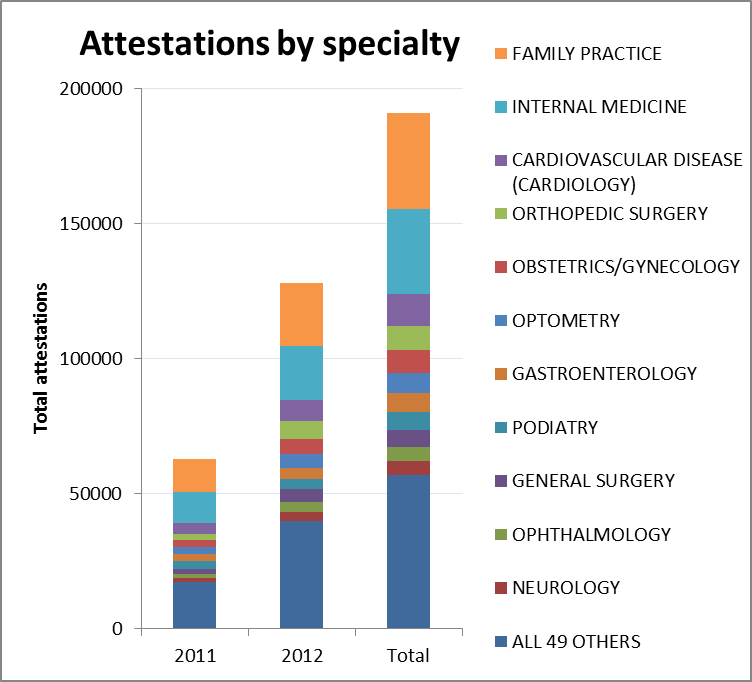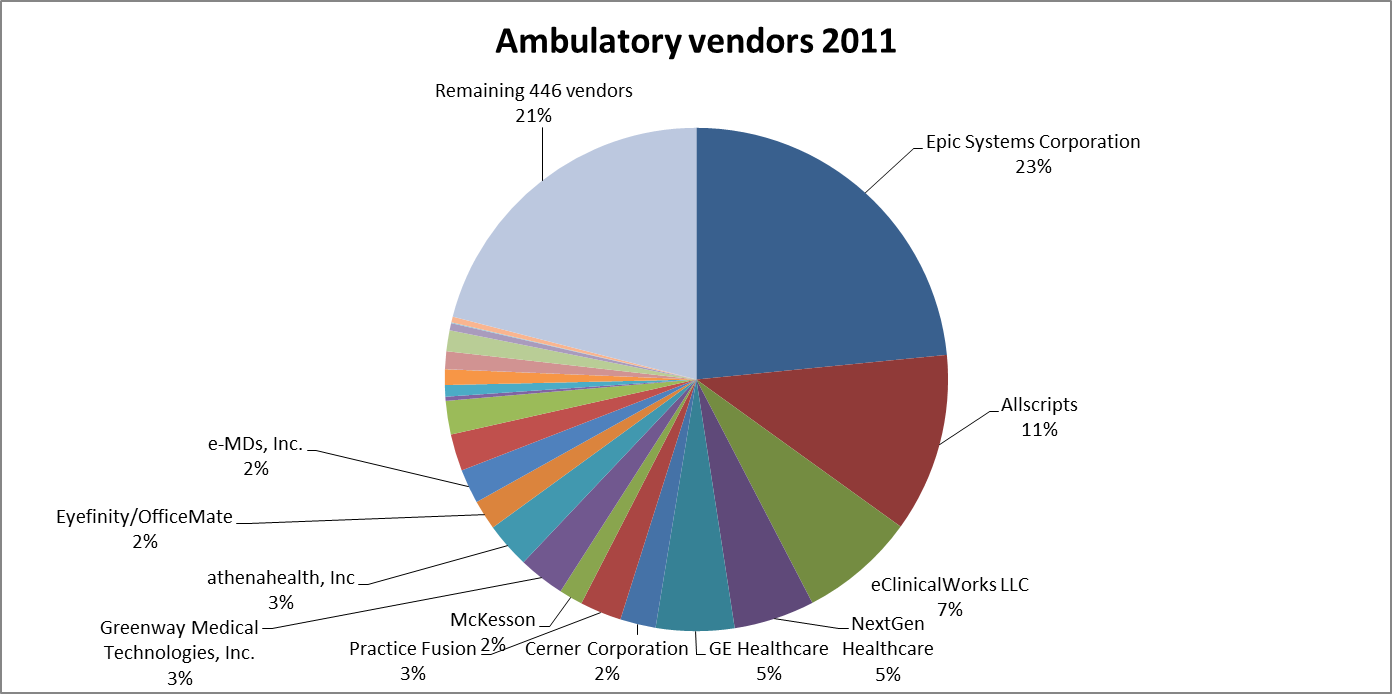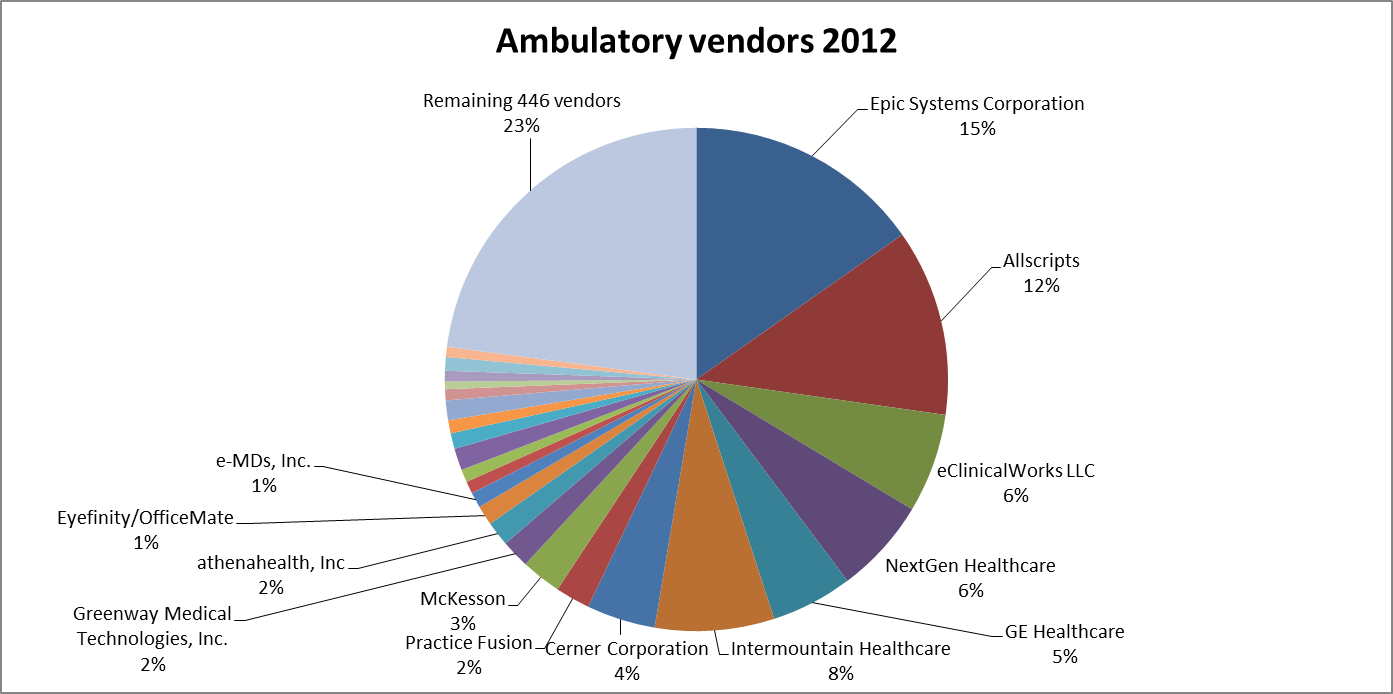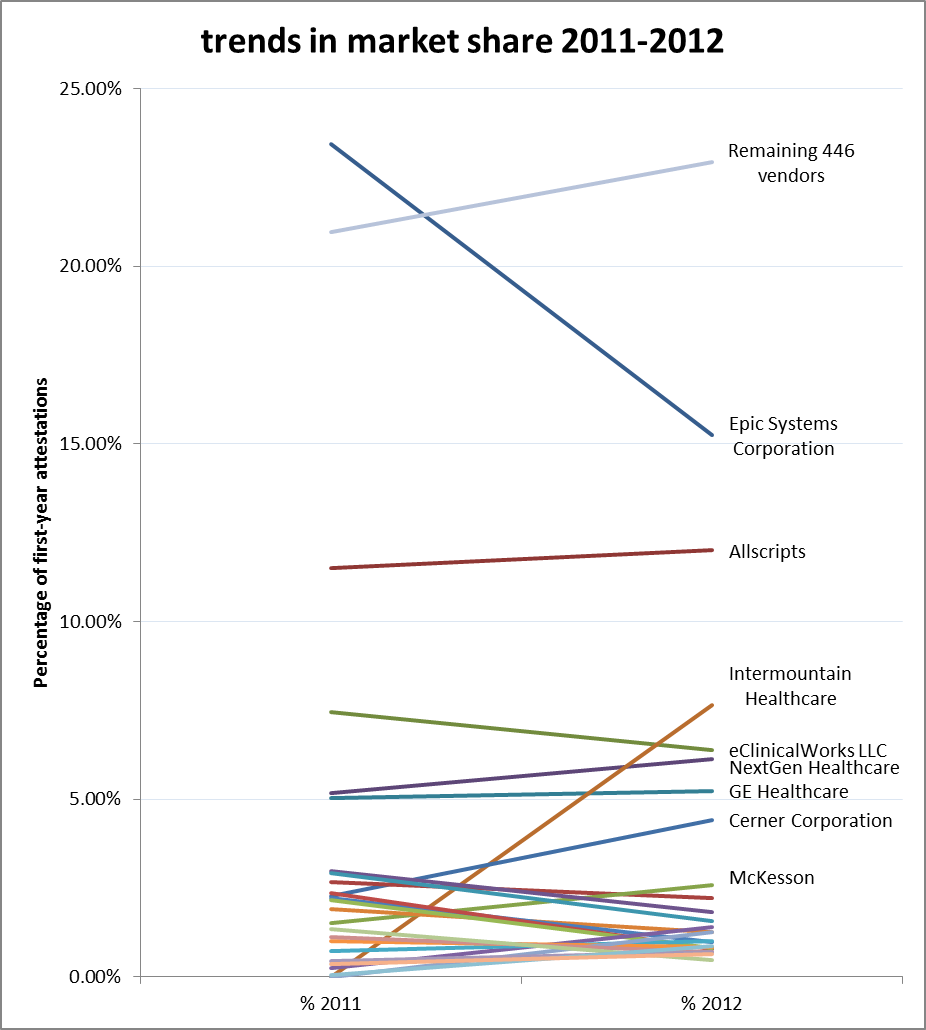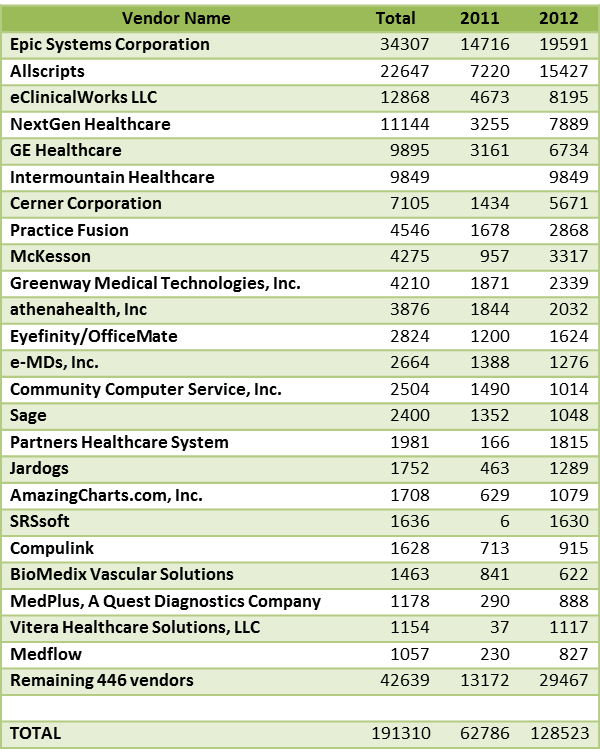Trends in EHR Vendor Strength
Robert Rowley, MD
Twitter: @RRowleyMD
On April 2nd, 2013, the federal Centers for Medicare and Medicaid Services (CMS) made available their updated data table for EHR Incentive Program (Meaningful Use) attestations, with specification as to which EHR products were used. The initial file, published on data.gov in 2012, showed the first year of experience of Meaningful Use, and allowed the relative comparison of vendors in the EHR arena.
The data table disappeared from the data.gov site in the middle of 2012, but has now been updated and re-posted (after some prompting at last month’s HIMSS conference). The updated data shows all the Meaningful Use attestation to date, and can show both first-year attesters for 2011 and also 2012, as well as second-year attesters in 2012 who started their first-year attestation in 2011. Given that this comes from actual reported Meaningful Use attestation to the government (for the Medicare version of the program), it is arguably the most accurate source, free from vendor hyperbole.
So what kinds of observations can be made from a preliminary analysis of this data? Which vendors are gaining ground, and which ones are sinking? Are doctors switching from one vendor to another?
Ambulatory data
The first cut of this data will be for ambulatory systems – EHR systems used by doctors in their offices. Hospital EHR data will be analyzed in subsequent articles.
In looking at first-year attesters, many physicians waited until 2012 to begin their Meaningful Use attestation. There were about twice as many 2012 first-year attesters as there were in 2011, so that the cumulative number of successful Meaningful Use attesters reached over 190,000. The breakdown by specialty looks like this (Click here or on image to enlarge):
In looking at the distribution of EHR products used for attestation, the pattern is similar to that seen in 2011: about 80% of the attestations were done using products from the top 24 vendors, while the remaining 20% of attestations were done using products from 446 different vendors. Of the products which have been Certified for use in the Meaningful Use program (the CHPL list), 801 vendors had products that were used by no one for attestation in either 2011 or 2012.
The relative distribution of first-year attestation changed a little from 2011 to 2012, indicating shifts in the relative market footprint of each vendor over the past 2 years.
In 2011, the relative landscape of EHRs used in ambulatory settings looked like this (Click here or on image to enlarge:
Of note, one can see the dominance of Epic among ambulatory EHR vendors. Epic, however, does not market directly to individual physicians – it only sells to hospital and hospital-based delivery networks. That means that the appearance of the use of Epic EHRs in the ambulatory setting represents physicians whose practices are owned (directly or indirectly) by Epic-using hospitals or health systems. In fact, one could argue that this can be used as a surrogate for looking at hospital ownership of community practices across the country.
In 2012, the pattern of vendor use for first-time attesters shows some shifts, even though the absolute numbers are up all the way around, given the increased first-year attestation numbers in 2012, (Click here or on image to enlarge):
Another interesting way of looking at the shifting footprints among EHR vendors is to map each vendor in terms of its percentage of market share from one year to the next ( (Click here or on image to enlarge):
For those wanting to look at the actual vendor-by-vendor numbers, here is the data table (Click here or on image to enlarge):
Vendor switching in year 2
One of the interesting insights that this data can address is the question of whether ambulatory physicians who attested in 2011 for their first year are still using the same products for their second-year attestation. Second-year Meaningful Use attestation is based on a 12-month measurement period (first year is only for a 3-month measurement period), so the 2012 second-year data did not appear until after the end of the year. The attestation period closed at the end of February.
In 2012, there were 30,765 attestations for the second program year – about 49% of those who were successful year 1 attesters in 2011. This seems like significant drop-off in Meaningful Use attestation year-over-year. Of those who successfully attested for their second program year, about 92% used the same EHR product as the one they used in their first year (2011). However, 8% of attesters (2,513) switched to a different product.
The newly released data by the federal government on Meaningful Use (at least, the Medicare option – the Medicaid option is managed by each state, and therefore no centralized data is currently available) provides a rich data set for analysis.
Relative market strengths among EHR vendors are noteworthy for EHR users, for institutions, and for investors. A more thorough analysis of this data will be forthcoming.
Dr. Rowley is a practicing family physician and healthcare information technology consultant. This article was first published on his blog. From its inception through 2012, Dr. Rowley had been Practice Fusion’s Chief Medical Officer, having created the underlying technology in his own practice, and using that as the original foundation of the Practice Fusion web-based EHR. Dr. Rowley brings a depth of experience and expertise in health care as well as health IT, having been in clinical practice for 30 years, including experience as a Medical Director with Hill Physicians Medical Group and as a developer of the early EMR system Medical ChartWizard. His family practice in Hayward, CA has functioned without paper charts since 2002.

